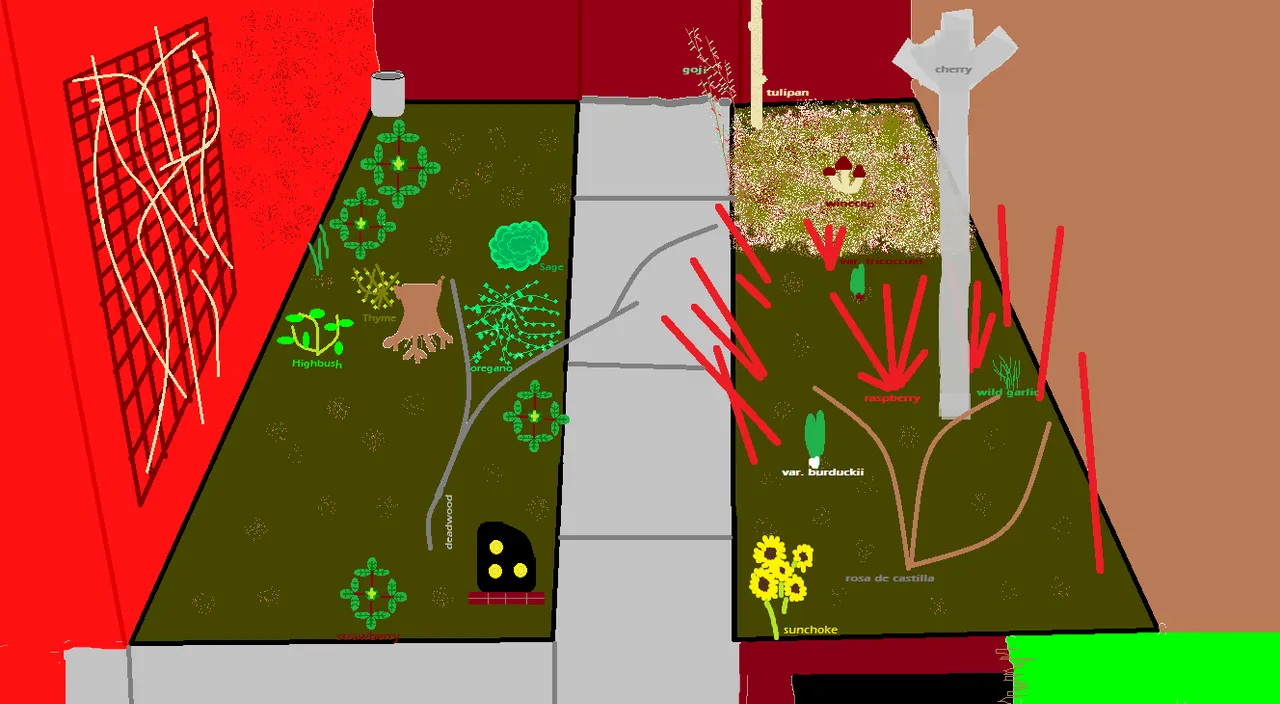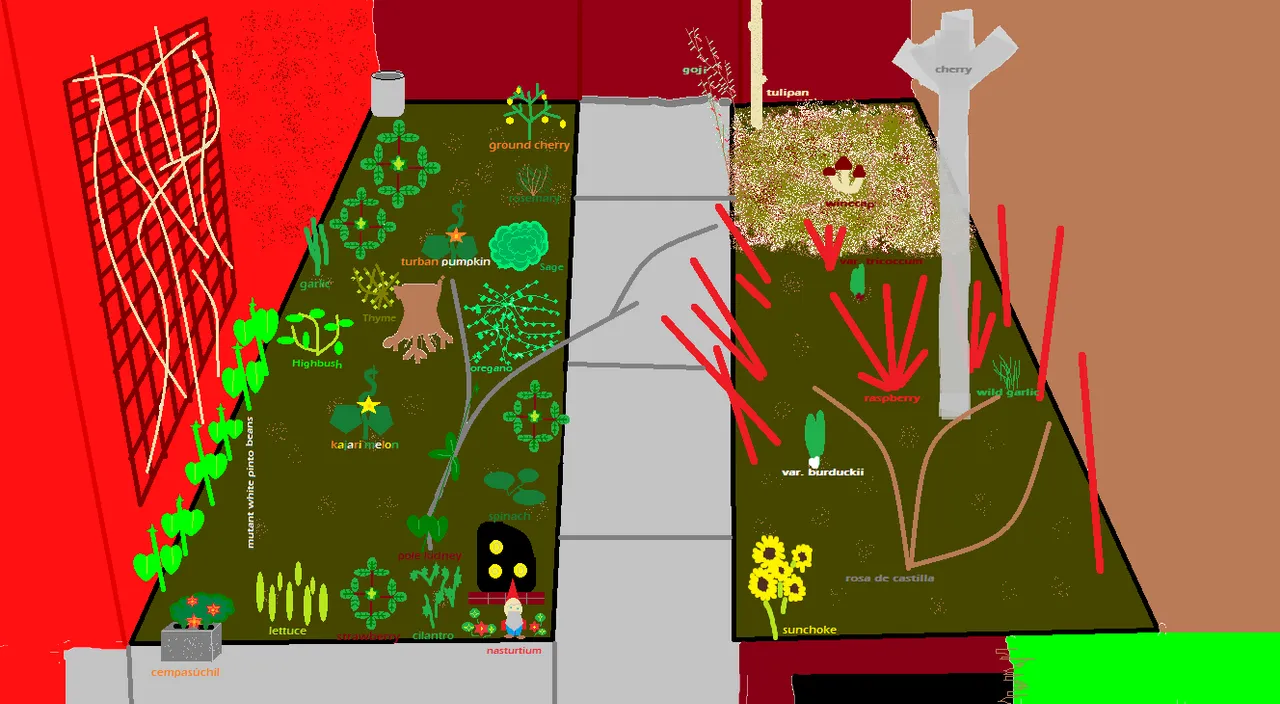
Greetings, Hive Gardeners! This is exciting! Winter in North America is almost over! Every year it feels like the first time and I never know what to do. It can be pretty overwhelming. Luckily, we have plenty of resources on our hands that help us plan(t) and ultimately learn from what we did. That's one of my favorite aspects of the #gardenjournal. It will always be available to look back on! It doesn't hurt to have some hard copies too! But this year, I decided to go digital.
I'm Actually on Vacation
I understand that I may be a little too late to participate in this month's garden journal challenge. I am currently travelling abroad. I left my cold homeland to another cold part on the opposite side of the world and I have 1 more week before I return. Why not take some time to artfully plan what I will cultivate? I do need a creative outlet, after all. So here's what I came up with so far.

This is what all is already there, AKA perennials. Some of it needs to be cut back... ahem oregano. That one, being in the mint family, likes to grow invasively. Thyme is of the same family but prefers to propagate itself via seeds. And last, but not least, the sage plant is just getting more and more bushy every year. So I'll have to make more garlic butter sage pasta and smudge sticks to curb its growth. What fun!
Instead of cutting back the raspberry canes, I think I'll actually just remove the ones closest to the path entirely. They get too bushy and block the way. Besides, this invasive-growing variety will eventually grow back anyway. The pigeon pea deadwood has been there several seasons (remember?) and I will not cut it because beans and things like to climb it. I always leave old cornstalks and things like this. Hey, they're free stakes that are firmly rooted in the ground! The peach stump is actually a full sized dead peach tree which could fall at any moment. Hopefully not during the active growing season. Plants like to climb that, too. I'm wary of removing the vines from the mattress spring trellis because it is mostly wild tinguaraque tomatoes, which I don't think I will grow anymore. They are far too feral and I decided I don't like their taste. Many of those old berries will fall and turn into volunteer plants so I have to be vigilant this year. We have a new public enemy #1.
What About Annual and Other New Plants?

Voila!
Some new arrivals are not included as I still have some planning to do. I do plan to integrate more pollinator-friendly flowers into the edible garden, but I need to finish reading my new book, Planting for Honeybees, first. Perhaps when I'm done, the rest of the space will be flowers and beans.
Of the three new perennials I'll be adding to the mix this year, are another different variety of blueberry to compliment the existing highbush. It will go right behind it.
The second is an actual cultivar of ground cherries, replacing the wild one I discovered, which yielded no fruit. I have a feeling that one will still grow back from underground tubers. Public enemy #2.
Number 3 is rosemary, a delicious herb I keep forgetting about!
Something I've always wanted to try is to plant marigold in a cinderblock that's part of the border. They are trap plants in that they attract the pests, away from your precious foodstuffs. Marigolds, besides having ladybug-friendly blossoms, also attract root pests so it is not advised to have them in your bed, I've heard. Or at least not near other underground produce, I think. Nasturtiums, a trap plant for aphids, will accompany the gnome that stands watch over the garden.
Spinach and lettuce will be interesting. I have several varieties of each. I never had success in the past but that was before I was a horticulturist. Nowadays, I know there are such things as cold weather crops which just bolt at the first sign of heat. Cilantro falls in this category as well. I might start these indoors as soon as I get back.
The shady side doesn't have much else because it's...well..shady! The neighbors' garage blocks that beautiful south sun so anything on this side has to either tolerate shade and cool weather (hence the mushroom bed) or be tall and vigorous like the raspberries.
The cherry tree also provides shade. I tried to minimize this by training it to grow very tall, so it looked like one of those trees from Dr. Seuss' books. That was deemed a hazard so we pruned it down to size last winter. That meant no flowers and consequently no fruit in spring. This spring we should hopefully see flowers again.
The 2 varieties of wild ramps are perfectly at home in their simulated forest floor environment. I want them to multiply!
Once I collect more flower seeds, I can make a more detailed plan of what I want to plant and where. For now, though, this is as far as I can plan at this point in time. It realy helped to organize some of my thoughts and make me (a little) less excitedly anxious about all that's to come.
Thanks for visiting!